By Sharon Townsend with Tiffanys Bridal
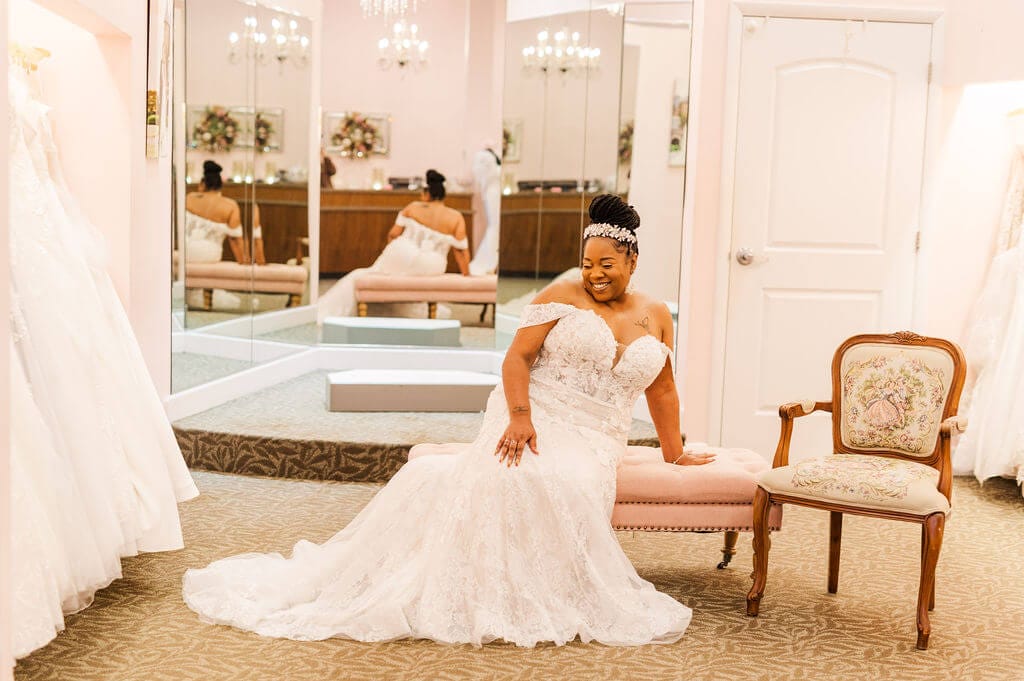
Rachael Mattio Photography
Imagine a bridal boutique…clouds of garments in shades of white stretch endlessly before you. A consultant asks if you have anything in mind, and suddenly you go blank. Countless hours poring over bridal magazines seem to have gone to waste. Suddenly, you don’t really know what you want or how to describe it. Before this happens to you in reality, review this vocabulary lesson.
Silhouette Savvy
The basic shape of a dress, or how a gown is cut, determines how it fits. Consider this first when choosing a gown. There are four basic silhouettes:
A-line (princess): Think of the shape of an “A” – narrow at the top and gradually flares out from the natural waist. This is the most universally flattering silhouette, mostly because it gives a sense of perfect proportions. When the bodice (top of the gown) features ruching (angled folds of fabric in all the right places) there’s an added slimming factor.
Ball Gown: A fitted bodice with a full skirt that starts at the waist. The fullness of the skirt can vary, but it is your basic fairytale, regal look. It may even have a Basque waist, a point just below the navel (think Queen Elizabeth I) that emphasizes a small waist. Great for those who are smaller on top and at the waist because it conceals fuller hips and thighs.
Empire: The waistline is elevated to just below the bust with a skirt that floats away from the waist in a shape similar to an A-line, but slimmer. This shape enhances a smaller bust, makes the petite look taller, and tucks away a tummy.
Sheath: Traditionally a tough silhouette to wear, this straight, close-fitting shape is best for petite figures. The mermaid (or trumpet) variation creates the illusion of curves and features a wider skirt that starts at or below the knee. The fit-and-flare gown is a more forgiving version. Fitted only to the mid-thigh, the skirt flares out higher to provide more freedom of movement at the knees and a little more balance for voluptuous figures (but bear in mind it still accentuates every curve).
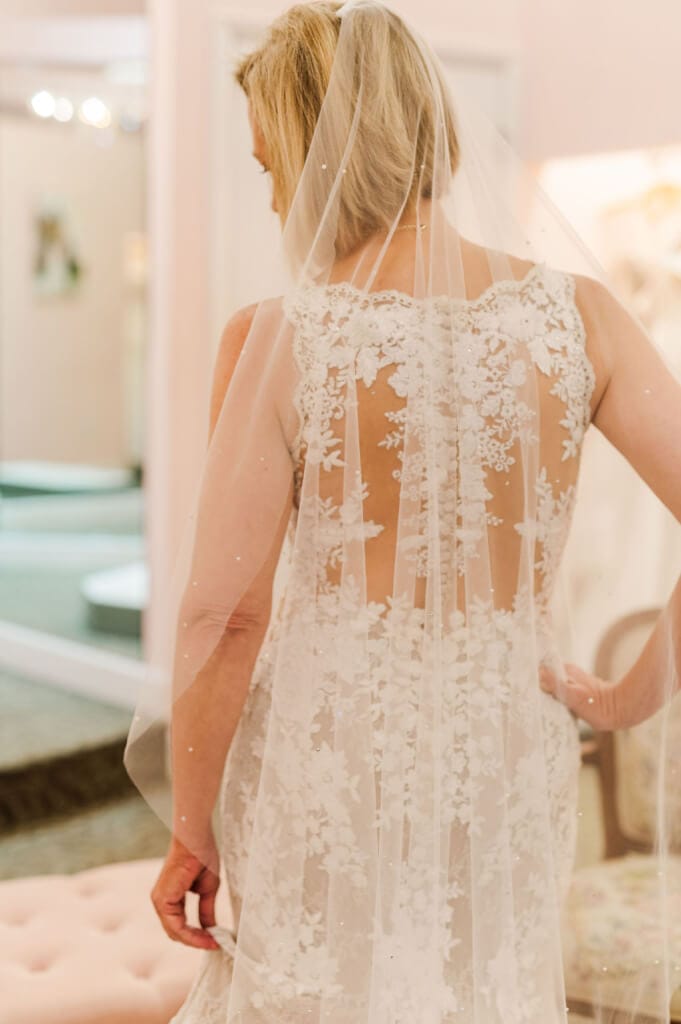
Rachael Mattio Photography
Fabric Framework
The fabric plays a huge role in setting the tone of the gown (and therefore the event), so it is best to choose a fabric compatible with the formality and location of the wedding. Here are the basics:
Lace: There’s a wide variety of this ornate, patterned material, but it is usually delicate threads woven into flowers or other fanciful shapes and often encrusted with beads, pearls, or crystals. Lace can add an air of tradition to a gown, but it is lightweight and versatile, both garden-ready and cathedral-worthy.
Organza: Soft and sheer, this lightweight material flows effortlessly to give a gown an ethereal look. Usually, it has a touch of silk for sheen. A simple organza gown can catch the breeze on a beach, or a designer can encrust it with crystals for a more formal affair.
Satin: Soft, smooth fabric that feels very rich and indulgent. Perfect for a black-tie occasion, but it can be heavy and retain heat.

By Jacqui Photography
Silk: Gorgeous natural fiber that has a lovely sheen to it. It breathes a little better than satin, but it’s not for the fussy bride as it wrinkles easily.
Taffeta: Lightweight material with a stiff texture that works great for more architectural designs (3-D accents, perfectly placed folds, etc.). It can get a bit noisy when it moves.
Tulle: Light, frothy, and sheer, this very tight netting is most often used in multiple layers or as a layer over other materials. It adds softness or a princess poof, depending on the amount.
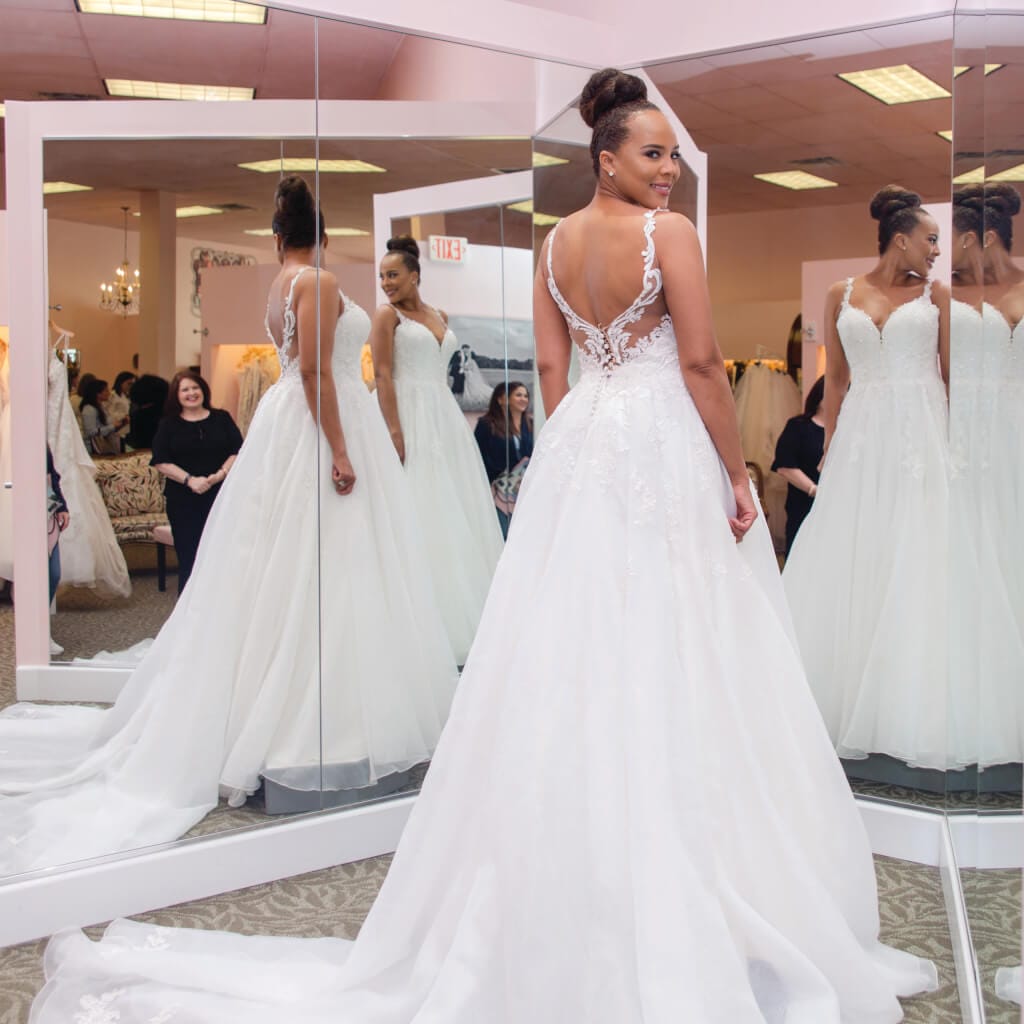
Michelle Kuzmick Photography
Back Basics
All eyes will inevitably be on the back of the gown at some point, so it is important to consider the features of a gown from that angle as well. The bodice may have a corset back. Or covered buttons might conceal a zipper. An open back adds drama. A keyhole back is an open back with a closure at the neck so the fabric frames the back. If you have a train, then you’ll need a bustle. There are two basic types:
French: The fabric is tucked underneath the back of the dress using 8 to 10 hooks, and, depending on the length of the train, it may be tucked under more than one time, creating a tiered, poufy effect. This works well on gowns with pickups (extra material on a skirt that is pushed up and tacked).
Traditional: It looks like a triangle of fabric on the back of the gown because the fabric is lifted to the bottom of the zipper or bodice and secured with a loop and button. This style shows off beaded trains nicely and gives a very clean look for a sleek design.
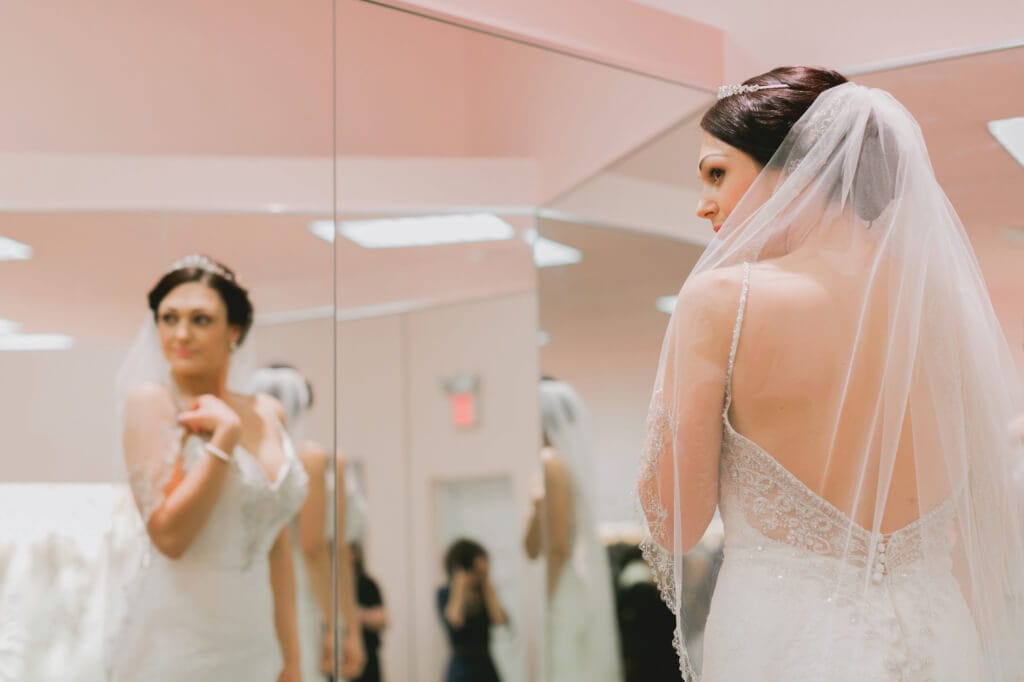
Tori Watson Photography
Neckline Nuances
The shape of the neckline frames your face for many a photo, so it is also an important feature.
Strapless: Gowns with no sleeves or straps are held up by boning and a concealed waistband. They can come straight across the bust line, curve like the top half of a valentine heart over the bust with a deep V at the cleavage (sweetheart), or gently dip in a cross between the two (semi-sweetheart). Sweetheart necklines accentuate the bust and can make a small top seem larger. The straighter the neckline, the more it minimizes the bust.
Straps: If strapless is not for you, have a good seamstress add thin spaghetti straps or wide straps over both shoulders or just one. Halters originate from the bust line and connect at the back of the neck, and they emphasize the shoulders and back.
Sleeves: Short cap sleeves cover just the shoulders and go hand in hand with a portrait neckline, flattering for a delicate neck and shoulders. Three-quarter length sleeves, which end just below the elbow, or full sleeves (à la Kate Middleton) may hide arm flaws but remember that they also add bulk to the upper body. V-neck gowns elongate the torso and show off the neck and décolletage.
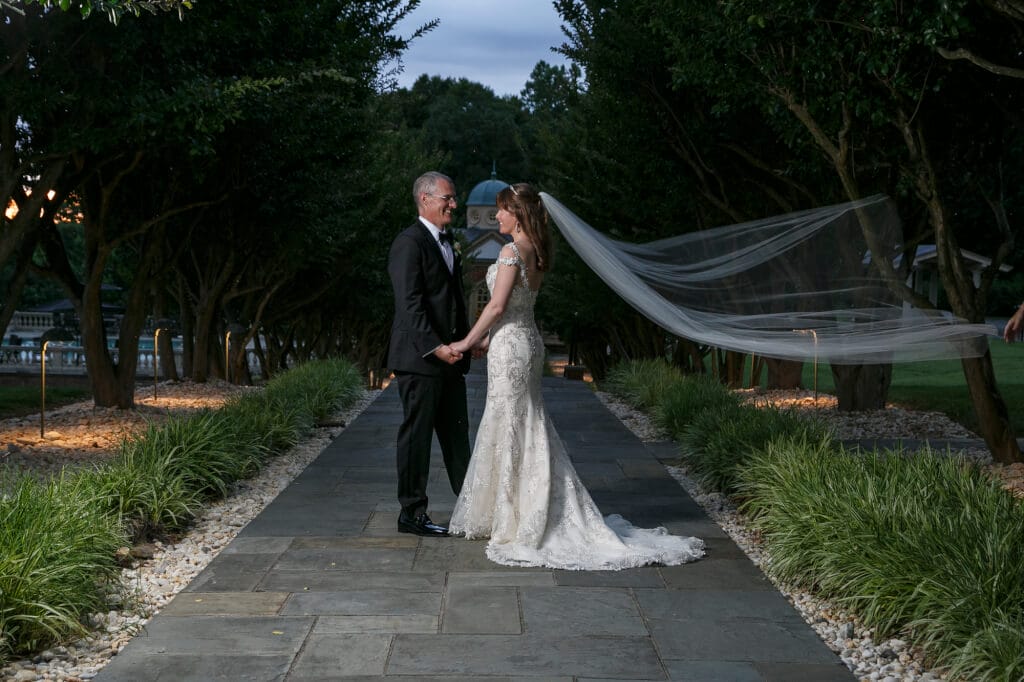
Hayes & Fisk Photography
A Final Word
Think of this as just a primer and your consultant will be your teacher when you’re in the boutique. It helps to bring the salon photos and ideas, but allow them to make suggestions. Brides who do so often end up thanking the consultant for helping them find the dress of their dreams. The gown you’ve ripped from countless magazines look great on the model but may end up doing you a disservice. Ask your bridal consultant to give you a variety of silhouettes to try. Once you’ve found the right silhouette, try different versions to find one that fits the occasion, your style and, of course, your budget.
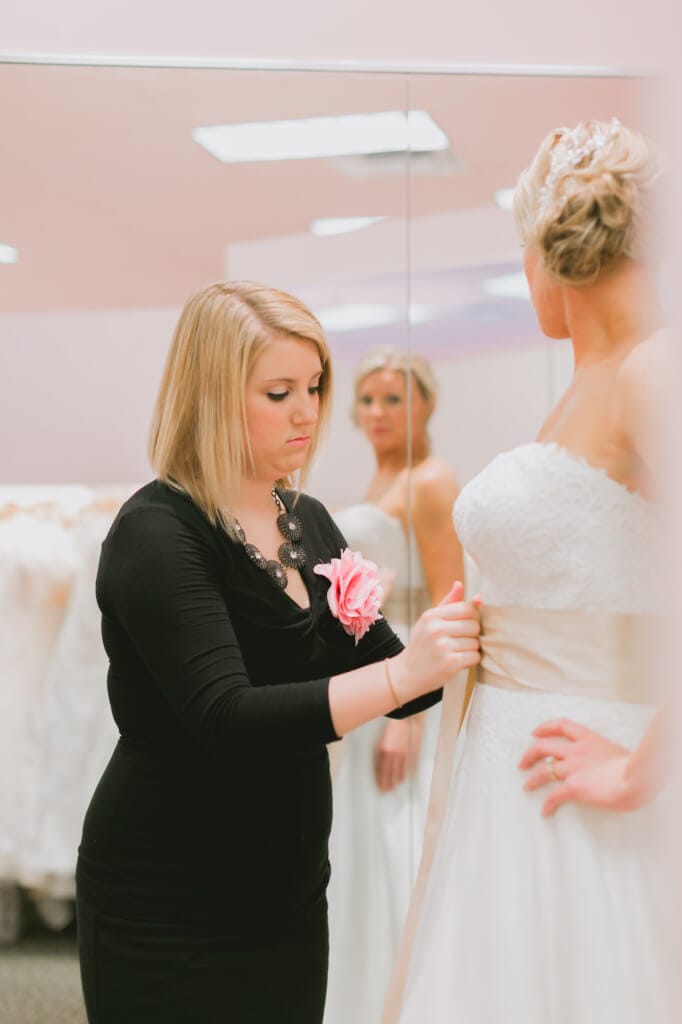
Tori Watson Photography
Sharon Townsend is the Owner/Manager of Tiffanys Bridal & The Groom’s Corner, a Richmond tradition since 1969. To learn more, go to www.tiffanysbridal.com.
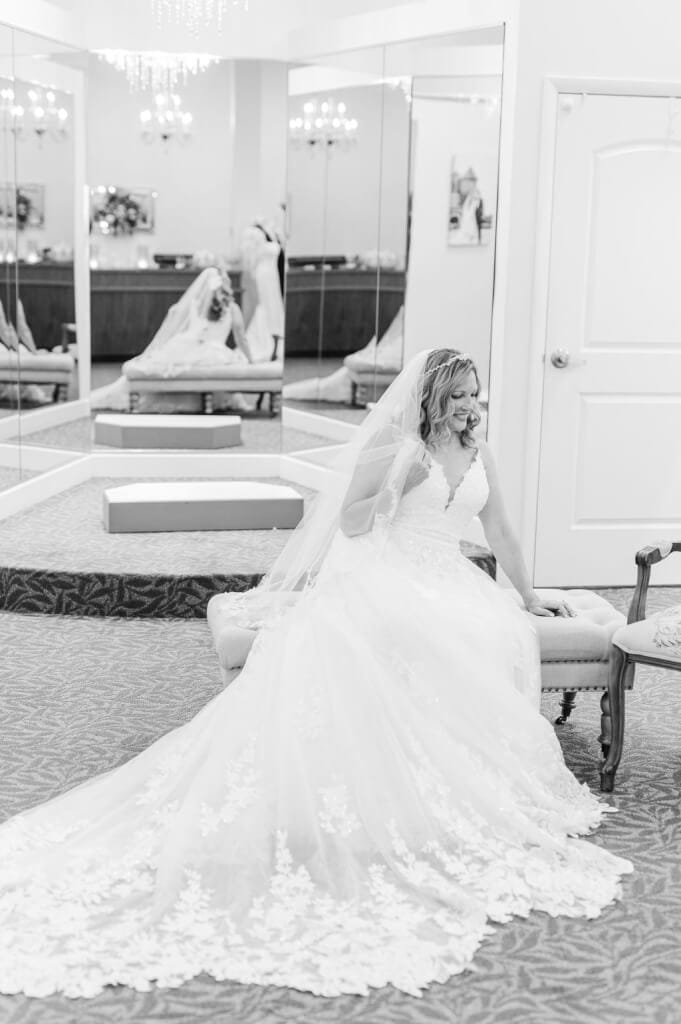
Rachael Mattio Photography

